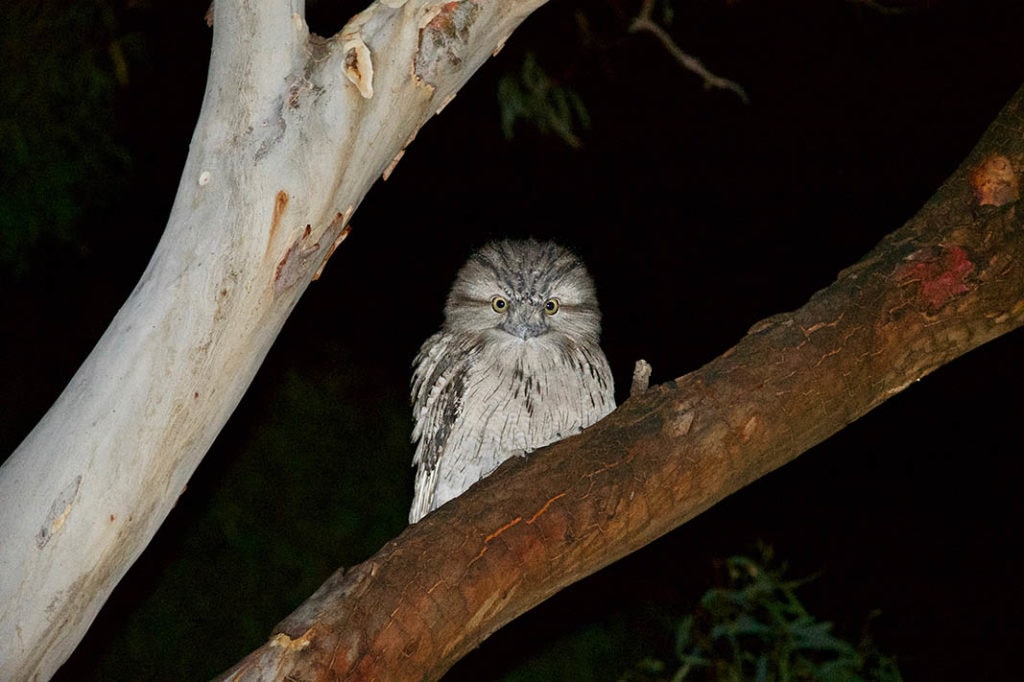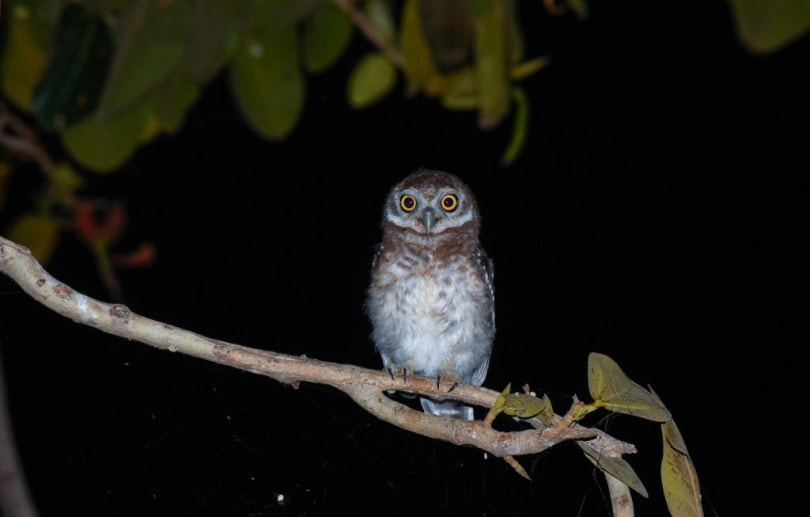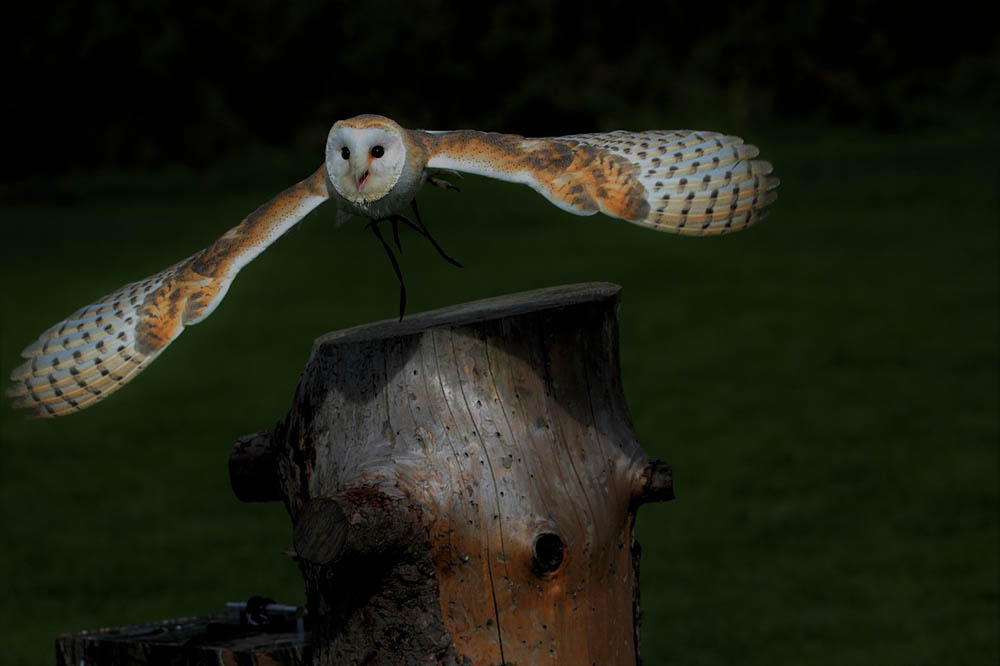Can Birds See at Night? What The Science Tells Us
Last Updated on

All birds can see better at night than humans because they have better sight in general. However, certain birds have better night vision than others. Nocturnal birds can see best at night, whereas diurnal1 birds have vision specifically designed for daylight, though they still have better night vision than humans.
In other words, all birds can see at night to some degree, but some birds can see better than others in the dark. Keep reading to learn how birds see at night and how the species determines how well they can see whenever the sun is away.

Understanding Bird Vision
To understand how birds see at night, you have to understand the anatomy of their eyes. In the most basic form, birds have eyes similar to humans in that their eyes have lenses, retinas, and corneas. Furthermore, birds have both cones and rods in their eyes. Cones detect color, whereas rods detect light.
Even though a bird’s eye is made up of all the same parts as a human eye, birds can see a lot better than humans. This is because they have more cones and rods in their eyes, which makes them able to see more color and see better in low-light situations.
Because birds have more cones than humans, they can actually see more colors. Humans can only see three color spectrums—blue, green, and red. Birds can see these three spectrums, as well as the UV spectrum.
Furthermore, birds have bigger eyes than humans when you factor in proportion. Some species are large, which causes their eyes to be bigger. The ostrich eye, for example, is larger than the average human eye. Smaller species don’t have bigger eyes than humans, but they are proportionately larger compared to their body size. Some species even have eyes that are the same size as their brain, if not bigger.
To reiterate, birds have better eyesight than humans for many reasons, despite the fact that their eyes are made up of many of the same parts as ours.

Bird Eyes and Night Vision
Even though a bird’s eye has the same features as a human eye, a bird’s eye is more comparable to a reptile’s eye. Both of their eyes are flatter with lenses that push forward, which increases the image size. All the while, their pupils are large, which allows them to take in more light and see better in the dark.
In addition to having large pupils, birds have more rods than humans. Rods are responsible for detecting light. Because birds have more rods, they are better capable of detecting movement even when there is little light outside.
Because birds have large pupils and more rods than humans, all birds have better night vision than us. That is not to say that they can see perfectly in the dark, but they can certainly see more than humans whenever the sun goes down.
Night Vision Depends on Bird Species
Some species are better at seeing in the dark than others. Birds can be classified as either nocturnal or diurnal. Nocturnal birds are those that are awake during the night but sleep during the day. In contrast, diurnal birds are awake during the day and sleep at night. Humans, as a species, are diurnal.
As you might expect, nocturnal birds can see better at night. That’s because nocturnal birds have evolved to be able to hunt and survive in the darkness. As a result, nocturnal birds have more rods in their eyes than diurnal birds, making them even more sensitive to light.
Diurnal birds, however, have more cones than nocturnal birds. Because they have more cones, they are better at distinguishing different items and colors in the daylight. This helps these birds find different insects, seeds, and foods while the sun is up.
In other words, how much a bird can see at night largely depends on its species. A nocturnal species will see more than a diurnal species. At the same time, a diurnal bird will be able to see more at night than a human.

The Bird That Sees Best at Night
Owls are known for having the best night vision of all birds. In fact, owls have better night vision than practically any other creature. Owls have large eyes and large retinas. They have five times more rods than our own eyes, allowing them to see even in the lowest of lighting.
To further improve the owl’s vision at night, they even have something called a tapetum lucidum, which is a layer behind the retina. The purpose of this layer is to further reflect light onto the retina to sharpen the owl’s ability to see at night.

Conclusion
Birds can see at night, though the degree of their vision depends on the type of bird in question. Nocturnal birds can see the best at night because their eyes have a lot of rods. Owls, for example, have some of the best night vision of all the animals on the planet.
Although diurnal birds don’t see as well at night compared to nocturnal birds, they still have better vision than humans. Even in the daylight, birds can still see better than humans since they have more rods and cones in their eyes.
Featured Image Credit: Mari May, Shutterstock
About the Author Robert Sparks
Robert’s obsession with all things optical started early in life, when his optician father would bring home prototypes for Robert to play with. Nowadays, Robert is dedicated to helping others find the right optics for their needs. His hobbies include astronomy, astrophysics, and model building. Originally from Newark, NJ, he resides in Santa Fe, New Mexico, where the nighttime skies are filled with glittering stars.
Related Articles:
What Is the Best Binocular Magnification for Hunting? Optical Features Explained
Can You Use Binoculars to Look At Stars? How to Choose the Right Pair
10 Types of Hummingbirds in Arkansas (With Pictures)
8 Types of Hummingbirds in Nebraska (With Pictures)
5 Types of Hummingbirds in Idaho (With Pictures)
3 Types of Hummingbirds in Mississippi (With Pictures)
8 Types of Hummingbirds in Kansas (With Pictures)
5 Types of Hummingbirds in West Virginia (With Pictures)
